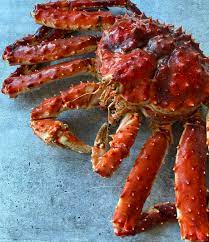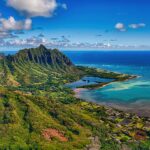The vast and mysterious ocean depths are home to a wide variety of fascinating creatures, and the King Crab is undoubtedly one of the most majestic among them. Known for its impressive size and striking appearance, the King Crab has captured the attention of marine biologists and seafood enthusiasts alike. In this blog, we will dive into the world of the King Crab, exploring its physical characteristics, habitat, behavior, and importance to both marine ecosystems and the seafood industry.

Physical Characteristics: The King Crab is a member of the crustacean family and is renowned for its large size and impressive pincers. Depending on the species, King Crabs can grow to be up to three feet in length, making them one of the largest crustaceans in the ocean. They have a hard exoskeleton that serves as a protective armor and varies in color from deep red to brownish-orange, helping them blend into their rocky habitats on the ocean floor.
Habitat and Distribution: King Crabs are primarily found in the cold waters of the Northern Pacific Ocean and the Bering Sea. They prefer deep-sea habitats, ranging from 100 to 2,000 feet below the surface, where temperatures are cooler and food is plentiful. These crabs are typically bottom-dwellers, residing in rocky or muddy substrates.
Behavior and Feeding Habits: As opportunistic scavengers, King Crabs are not picky eaters and will consume a wide variety of food items. Their diet consists of everything from smaller crustaceans and mollusks to dead fish and plant matter. Using their powerful pincers, they can crack open the shells of their prey with ease, making them formidable predators on the ocean floor.
Importance to Marine Ecosystems: King Crabs play a crucial role in the marine ecosystem as both predators and prey. As scavengers, they help maintain the balance of the ocean floor by consuming dead and decaying matter, preventing the buildup of organic material. Additionally, they are an important food source for various marine species, including fish and sea birds.
Commercial Significance: Apart from their ecological importance, King Crabs hold significant economic value in the seafood industry. Their succulent meat is highly sought after and considered a delicacy in many parts of the world. Commercial fishing for King Crabs is regulated to ensure sustainable harvesting and prevent overexploitation of these valuable resources.
Conservation Efforts: Due to their slow growth rates and vulnerability to overfishing, King Crab populations need careful management to ensure their long-term sustainability. Various conservation efforts, such as size limits, fishing quotas, and protected areas, have been implemented to safeguard these magnificent creatures and their habitats.
Conclusion: The King Crab, with its imposing size and impressive abilities, is a testament to the diversity and wonder of marine life. As we continue to explore and appreciate the ocean’s treasures, it is essential to strike a balance between utilizing these resources and protecting them for future generations. By understanding and respecting the significance of the King Crab in both marine ecosystems and the seafood industry, we can ensure the preservation of this majestic creature for years to come.



















Add Comment